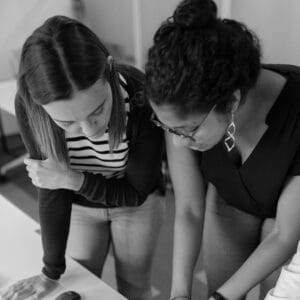Creating a More Secure Retirement
Saving for retirement is a challenge for most people. It feels far in the future, and it’s natural to focus on more immediate financial needs. That’s not to say we don’t recognize the importance of setting up a retirement account and starting to save early, but even with that knowledge it’s easy to be deterred by unpleasant or complicated tasks, difficult decisions, or the multi-step process for getting started.
In Mexico, the government created policies to address this problem, such as requiring employers to automatically direct 6.5% of a worker’s salary into their retirement account. However, many workers don’t realize that if they rely on mandatory contributions alone, they can expect to receive less than 30% of their current salary in retirement. Furthermore, roughly 60% of the labor force in Mexico works independently or informally, without an employer making automatic contributions on their behalf.
It’s clear that to have a comfortable retirement, Mexicans still need to contribute voluntarily to their retirement accounts. Yet less than 0.5% of the nearly 40.5 million registered account holders make at least one contribution each year. This has serious repercussions on people’s lives as they age: currently 41% of the nation’s elderly live in poverty.
In order to uncover the key factors driving low levels of voluntary contributions in Mexico, ideas42, in partnership with MetLife Foundation, collaborated with private retirement fund administrators known as Afores (Administradores de Fondos para el Retiro) and the government regulation commission CONSAR (Comisión Nacional del Sistema de Ahorro para el Retiro). In the first phase of this work, we identified behavioral barriers to saving and published them in a 2015 report.
Now in our 2018 report we detail the seven different interventions designed to address the barriers summarized in our first report, and share results from testing them with randomized controlled trials. The interventions include:
- Designing a new retirement account statement received by 21 million Mexicans to encourage taking action
- Incentivizing voluntary savings contributions
- Enabling people to visualize (and sympathize with) their “future selves” via a selfie app
- Sending text messages at key intervals either reminding people to act on their savings goals or emphasizing the importance of saving for their family’s well-being
This undertaking marks the first application of behavioral science across a major government-regulated financial system in Mexico that impacts the lives of millions of citizens. Insights from this work have contributed to new policies and communications practices by the Mexican government, reaching 21 million account holders nationwide.
Others in the retirement industry, FinTech companies, and traditional banks can apply the designs from this collaboration to innovate and improve their own products and services—helping their clients save more and improve their financial health, while also creating more active clients, higher levels of client engagement, and the potential for higher account balances for the institution.
By designing, testing, and scaling what works, we can create services that better support long-term financial health—setting people up for a more comfortable retirement.
Interested in learning more about this work applying behavioral science to a crucial social problem? Reach out to us at info@ideas42.org or tweet at @ideas42 to join the conversation.









